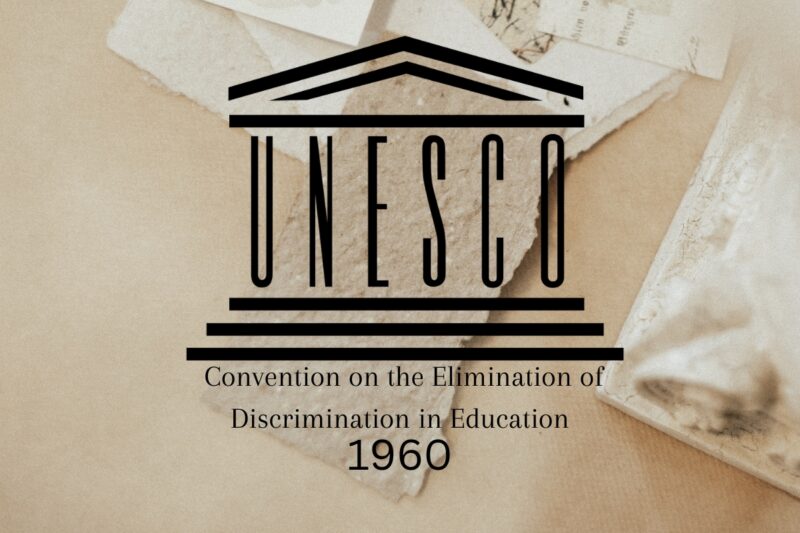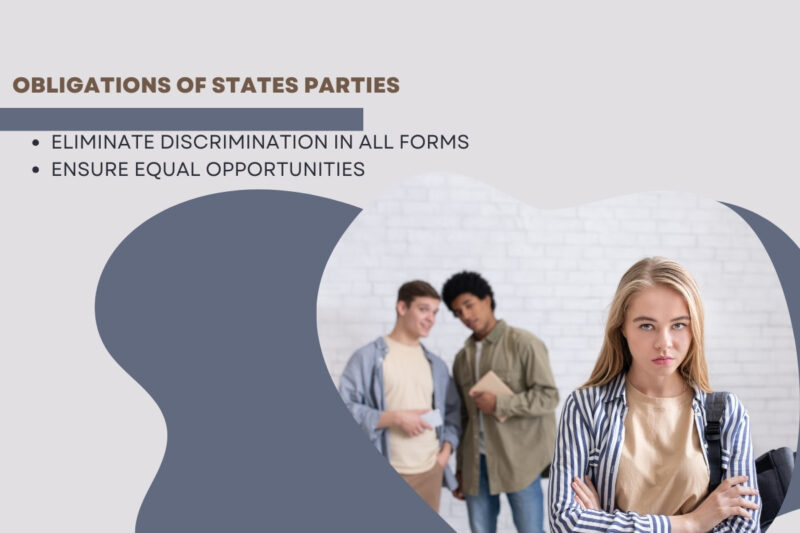Education is the bedrock of individual growth and the advancement of society. The quest to provide everyone with equal educational opportunities is a worldwide endeavor.
Key among these efforts is the fight against discrimination, striving to forge a future where learning and personal development are accessible to all.
That was the whole point of this convention, and I will now explain more about its highlights.
Background of the Convention

Back in 1960, UNESCO took a historic step by introducing the Convention on the Elimination of Discrimination in Education. This was a game-changer, signaling a commitment to make sure education was a right that everyone could claim, free from discrimination.
The goal was simple yet profound: to level the educational playing field so that a person’s background wouldn’t dictate their access to knowledge.
Nations around the globe acknowledge how education can revolutionize lives, creating more inclusive and fair communities. But the road to universal education has been bumpy, with discrimination often blocking the path for many.
To combat this, UNESCO rallied its members to craft a detailed guide that would hold countries to a new standard, one that actively fights against educational discrimination.
It provides precise definitions of discrimination within the educational context, offering a blueprint for nations to assess and reform their educational policies and practices.
By ratifying the convention, countries agree to undertake active measures to dismantle educational barriers. They commit to modifying laws and policies that sustain discrimination, intending to make educational institutions exemplars of equality and inclusion.
The ratification signaled nations’ commitment to examine their educational systems critically and enact changes where needed. It highlights the crucial role of education in human development and societal advancement.
It continues to guide countries in their efforts to eradicate discrimination in education and uphold the principle of equal educational opportunities for everyone.
The Convention sets out principles to help countries achieve equality in education. It emphasizes that every individual has the right to access quality education without facing discrimination. Also, it aims to make education a pathway to opportunities for all, serving as a tool for positive societal change. It states that everyone, no matter their background or characteristics, deserves equal chances in education. This principle urges countries to remove any obstacles in their educational systems that block people from learning. It points out education’s role in highlighting understanding and cooperation among different nations and groups. By pushing for equal access, the convention aims to ensure that education acts as a good force, helping individuals achieve their potential.Key Principles
Non-discrimination as a Fundamental Right
Importance of Equal Access to Education
Definition
The focus was on a clear explanation of what counts as discrimination in education.
It identifies any exclusion, distinction, or restriction made based on race, color, sex, language, religion, political opinion, national or social origin, economic condition, or birth as discriminatory.
These actions prevent individuals or groups from accessing or benefiting from education on equal terms.
Criteria for Discrimination
Discrimination occurs when policies or practices in education unfairly separate, exclude, or limit individuals based on specific characteristics. It includes both direct actions that intentionally discriminate and indirect ones that unintentionally cause disparities.
Examples
- Denying access to education based on gender or ethnicity.
- Providing resources or opportunities unequally within schools.
- Setting different standards for students from different backgrounds.
Obligations of States Parties

Another key part is about specific duties for countries to combat discrimination in education. It mandates that countries must act to eliminate discrimination and promote equality within their educational systems.
Eliminate Discrimination in All Forms
Countries must identify and abolish any form of discrimination in their educational policies and practices. This includes revising laws or regulations that allow for discriminatory practices within educational institutions.
And people should get involved in this matter as well, by actively participating in decisions their states and counties make.
Ensure Equal Opportunities
Countries need to guarantee that all individuals have access to education without discrimination. That involves creating policies that support equal opportunities for learning and participation in educational activities for everyone.
Monitoring and Implementation

UNESCO plays a crucial role in overseeing the implementation. It guides countries on how to align their educational policies with the standards. UNESCO also facilitates international cooperation, helping countries share best practices and resources to overcome challenges in eliminating discrimination in education.
Reporting and Compliance
Countries that ratify the Convention must regularly submit reports to UNESCO. The reports detail the steps taken and progress made toward eliminating discrimination in education.
The reporting process encourages transparency and accountability, allowing for an assessment of each country’s commitment to the goals.
But it can work on a lower scale as well. You know, when people don’t ignore the issue, it can be resolved much faster. And we all have the power in our hands to gather more attention about anything. Simply by using social media. Just like parties are using these tools to target potential voters, we can use them to share public issues.
Impact and Importance
The main focus is on guiding countries in reforming their educational systems.
It has led to changes in laws and policies, ensuring that more individuals have access to education without bias or barriers.
Challenges and Progress
While the Convention sets a framework for eliminating discrimination in education, countries face challenges in its full implementation. Economic disparities, cultural norms, and lack of resources can hinder progress. However, through continuous efforts and international support, significant strides have been made in providing equal educational opportunities for all.
Countries must keep making steps towards conditions that are fair to all.
One of the countries that are leaders in this field is the United States, with its series of actions introduced by the U.S. Department of Education.
Conclusion
The work to achieve the goals of the Convention is a work in progress, with both obstacles and victories along the way. Countries around the world are joining forces, with support from UNESCO and different groups, to make sure everyone has an equal chance at education.
The Convention highlights how education can change lives and help build communities that are welcoming and respectful to everyone.

